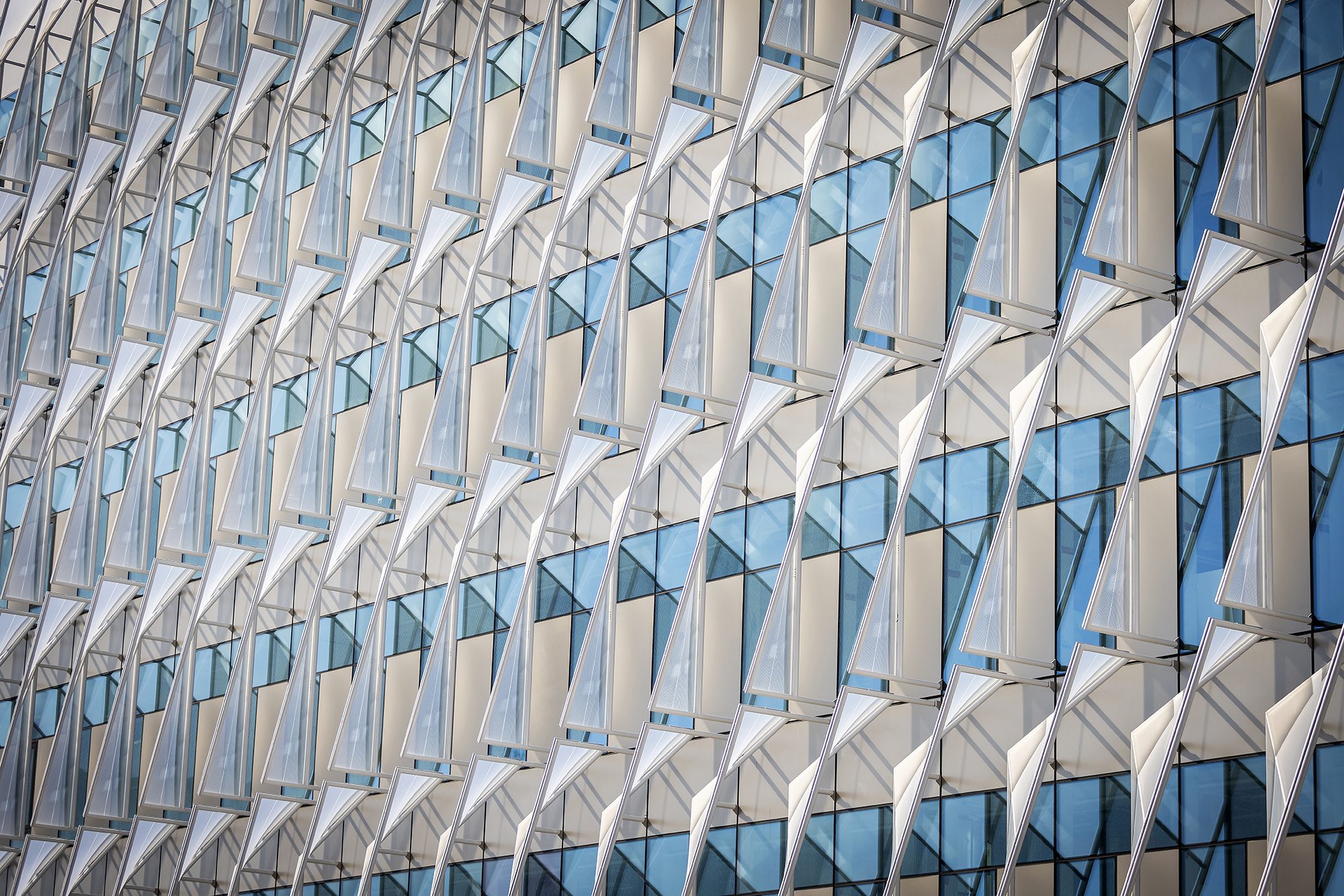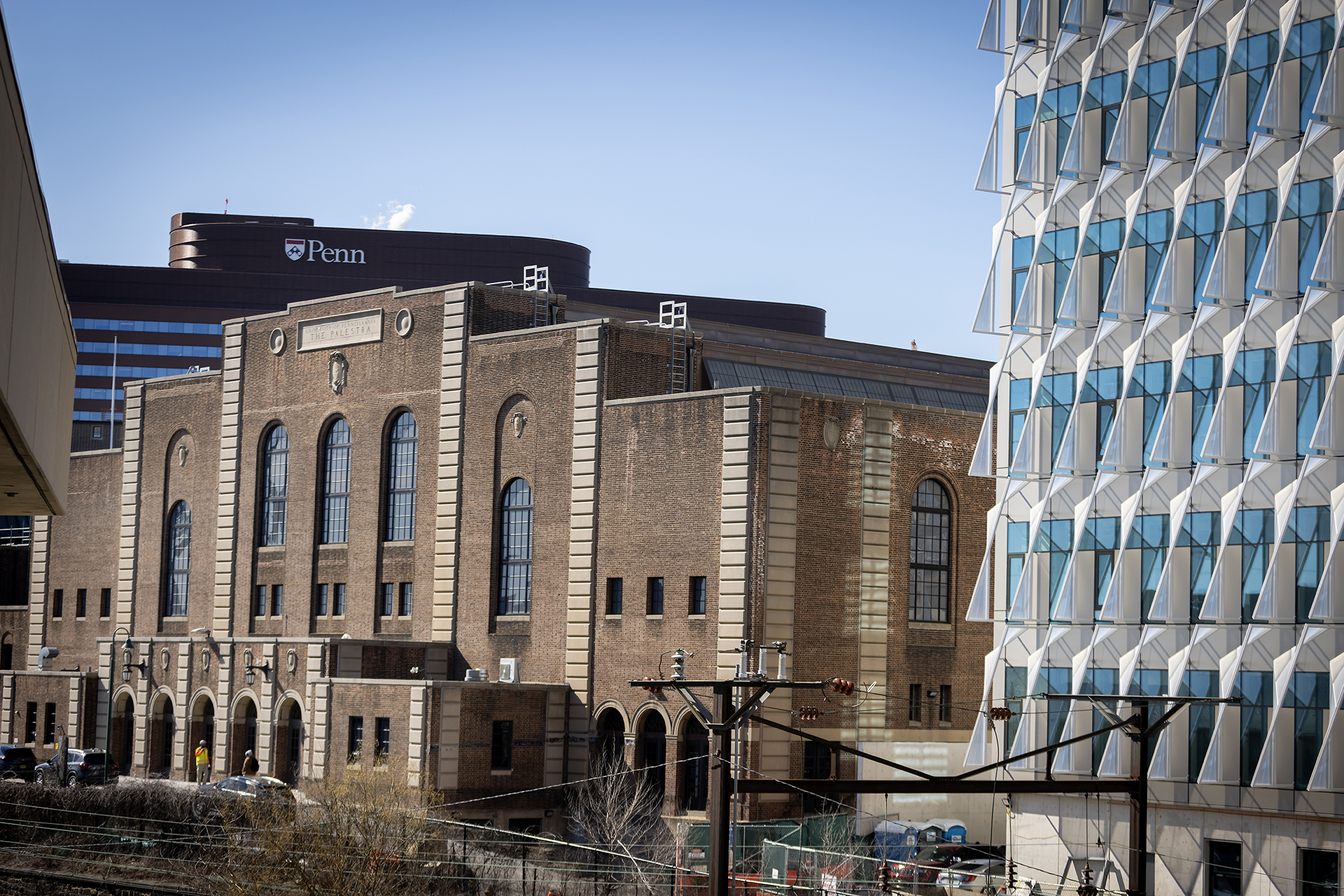
- This is …
The series of sun shades at 32nd and Walnut Streets. They are designed by the Boston office of the German architectural practice Behnisch Architekten. The shades greet passersby from the east and west ends of campus and have a striking finlike shape, working in tandem with a horizontal and vertical window design that efficiently manages solar gain while still allowing for occupant-friendly views.
- It lives …
On the windows of the Vagelos Laboratory for Energy Science and Technology (VLEST), a collaboration between the School of Arts & Sciences (SAS) and the School of Engineering and Applied Science (SEAS). The facility was topped off last winter and is slated for a 2025 opening. The 112,500 square feet of new lab space aims to advance the study of sustainable energy solutions and will integrate expertise from both SAS and SEAS.
- It’s cool because …
Michelle Lee, of Behnisch Architekten, explains that the design uses horizontal windows to let in sunlight more deeply into the building while the vertical window allows for views. The bottom panel of the shade reflects most of the solar radiation from the glass, while the matte-finish top panel diffuses direct sun through the clerestory—the upper portion of the window that’s above eye level.
The design is a result of solar geometry modeling that can demonstrate the journey of sunlight during the day, even accounting for weather conditions.
“Usually, architects design vertical shades for East and West facades because that orientation prevents the sun at low angles (in the morning and evening) from directly heating up the interior space, and so in this shade design, you’ll see that the vertical window is protected with the vertical reflective shade to reflect away solar radiation,” explains Dorit Aviv, an assistant professor of architecture in the Stuart Weitzman School of Design. “But another really important part of solar design is that while you want to limit direct solar gain, because you want energy savings, you still want daylight to reach the interior space, so that’s why they’re providing a clerestory through which they are bringing in some diffused light deep into the space.”
The shades also use a light material that allow for them to be tensioned into the unusual—but very much functional—multidimensional shape. Aviv says clever sun shade designs stretch all the way back to antiquity—particularly societies in warmer climates. But a focus on lighter materials more recently has made room for otherwise unlikely designs to improve energy efficiency as clients look to reduce their carbon footprint.
“I get a lot of people interested in what’s going on [with the sun shades],” says Nadine Gruhn, managing director of the Vagelos Institute for Energy Science and Technology. “It’s making it a real highlight of that corner of campus and it’s going to be a marker for years to come.”








